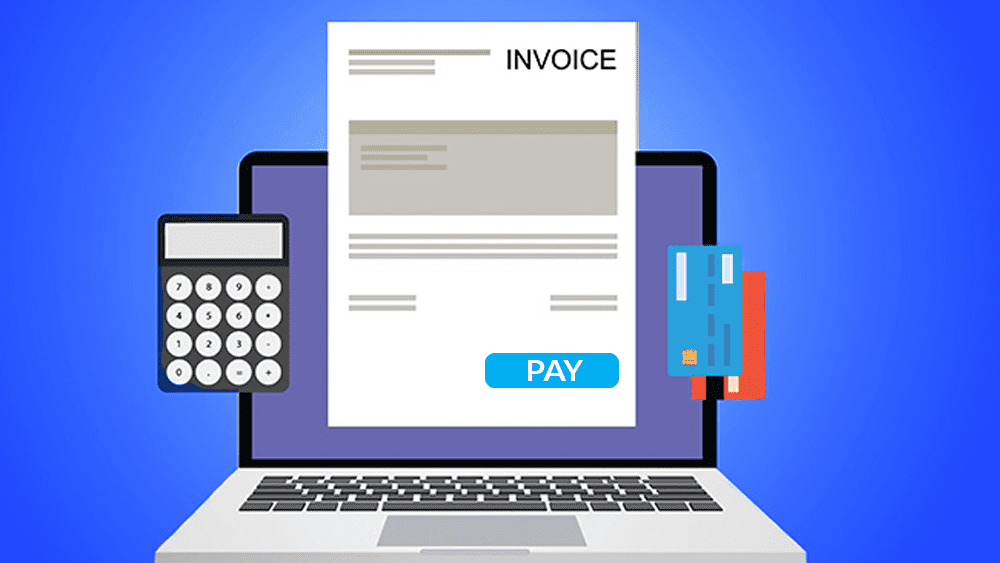Achieve Digital Transformation with Electronic Invoicing Systems

Technology and artificial intelligence (AI) integration have become essential components of corporate operations in today’s fast-paced business environment. This trend toward digital transformation has permeated many company procedures, including invoicing. In addition to saving time and resources, switching from manual to electronic invoicing is crucial for enhancing cash flow management, lowering Days Sales Outstanding (DSO), and ensuring an effective Order to Cash (OTC) cycle. In this article, we’ll discuss how crucial it is to integrate technology and artificial intelligence (AI) into your invoicing process, the advantages of switching to electronic invoicing, real-world examples of electronic invoicing systems, the practicality of an all-digital portal, and strategies for convincing clients to change.
Benefits of Introducing Technology and AI into Your Invoicing Process
Organizations from all sectors increasingly use digital transformation to improve customer experience, optimize processes, and increase profitability. The billing process is one important area where technology and AI can be effectively combined. Traditional manual invoicing takes a long time and is prone to mistakes, which causes delayed payments and reduces cash flow. Organizations can automate operations, reduce errors, and increase efficiency by implementing technology-driven invoicing solutions.
AI has the potential to improve the way that invoices are generated significantly. AI-driven solutions can extract pertinent information from bills, compare them to contracts and purchase orders, and even automate the approval workflow. This shortens the payment cycle and requires less manual work, which improves free cash flow and lowers DSO. AI can also analyze archived data to find patterns and trends, allowing firms to decide on pricing strategies and lending conditions with full knowledge.
Cost Savings
The typical invoicing procedure involves many expenses, including paper, printing, mailing, and labor. Organizations can avoid these expenses by switching to electronic invoicing, thus freeing up funds for more critical projects. Technology-driven invoicing can result in cost savings that have a positive financial impact and raise profitability.
Enhanced Accuracy
When creating invoices manually, there is a higher chance of making mistakes that result in disputes and payment delays. By ensuring correct data entry and extraction, technology and AI reduce the likelihood of errors. This accuracy strengthens customer connections and the organization’s professionalism and reputation.
Data-Driven Insights
Thanks to technology and artificial intelligence, organizations may learn essential things from their invoice data. AI can analyze archived data to spot trends, patterns, and consumer behavior. Organizations can use these insights to make educated judgments about client segmentation, lending terms, and pricing tactics. Data-driven insights support strategic planning and business growth strategies.
Shifting to Electronic Invoicing
Paying bills continues to be challenging. This is true even though more organizations than ever before are choosing electronic invoicing over paper-based invoices. Leading researchers like Billentis predict that the global market for electronic invoicing will reach 18 million euros (about $19.5K) by 2025. The shift from manual to electronic invoicing brings with it a multitude of benefits that go beyond just efficiency improvements. Electronic or e-invoicing eliminates the need for physical paper invoices, postal services, and manual data entry. Instead, invoices are generated, sent, received, and processed electronically, leading to faster transaction cycles and reduced administrative costs.
One of the significant advantages of e-invoicing is its impact on DSO. Organizations can significantly improve their cash flow by reducing the time for invoices to be generated, approved, and paid. Moreover, electronic invoices are less susceptible to errors and disputes, as the data is directly integrated into the financial systems, leaving little room for misinterpretation. This seamless integration enhances the overall customer experience and fosters a collaborative and transparent relationship between businesses and their clients.
Three Popular Electronic Invoicing Systems
Salesforce
Salesforce offers an electronic invoicing system allowing organizations to create, send, and track invoices directly from their Salesforce CRM (Customer Relationship Management) platform. This integrated system helps streamline invoicing by linking customer data, products or services, and billing information.
Xero
Xero is a popular cloud-based accounting software that provides a comprehensive electronic invoicing system. Users can create professional invoices, customize them with their branding, and send them to clients via email or other electronic methods. Xero’s system also includes features like automated invoice reminders, online payment options, and tracking of invoice statuses.
BQE Core
BQE Core is an integrated project management and accounting software with an electronic invoicing system. Users can generate invoices based on project hours, expenses, and other billable items. The system allows for the customization of invoice templates and offers features such as automated recurring invoicing, time-tracking integration, and client portals for invoice access.
Advantages of an All-Digital, Electronic Invoicing Portal
Adopting an all-digital, electronic invoicing portal gives organizations unparalleled convenience and efficiency. This portal serves as a centralized platform for creating, sending, and receiving invoices, eliminating the need for manual data entry and paper-based processes. Through the portal, businesses can generate invoices with just a few clicks, attach relevant documents, and track the status of each invoice in real time.
The convenience of having an electronic invoicing portal extends to customers as well. Clients can easily access their invoices, review payment details, and make payments online, fostering a seamless and user-friendly experience. Furthermore, the portal’s reporting and monitoring tools offer businesses valuable insights into their financial performance, enabling them to optimize their cash flow management strategies.
Five Methods for Getting Customers to Make the Switch
It takes a strategic approach that emphasizes the advantages and simplicity of the electronic system to move clients from a manual invoicing process to a digital one. Here are some practical strategies for persuading clients to switch:
1. Encourage Communication and Education
Inform clients about the benefits of electronic invoicing, such as quicker turnaround times, fewer errors, and improved transparency. Explain in detail how to utilize and access the electronic invoicing portal.
2. Offer Incentives
Offer discounts on future purchases or faster order processing as incentives to customers who switch to electronic invoicing.
3. Create Personalized Support
Provide personalized support to customers during the transition phase. Offer assistance setting up accounts, navigating the portal, and addressing concerns.
4. Provide Demonstrations
Showcase the features and advantages of the electronic invoicing gateway through live demos or webinars. Customers may better comprehend the system’s use and effectiveness with the help of this visual representation.
5. Offer a Trial Period
Offer a trial period so clients can see the advantages of electronic invoicing. They may be more likely to fully accept the new system if they have this practical experience.
Conclusion
In conclusion, a critical step towards digital and financial transformation is integrating technology and AI into the invoicing process. The transition from manual to electronic invoicing boosts operational effectiveness while streamlining the Order to Cash cycle, improving cash flow management, and lowering DSO. The move to electronic invoicing is advantageous for both organizations and their customers. Embracing digital invoicing shows how technology may revolutionize contemporary corporate processes.
At Sirius Solutions, we value trust, transparency, and exceptional performance. We provide growing organizations and startups with simple solutions and help with the proper implementation to realize the desired results.
